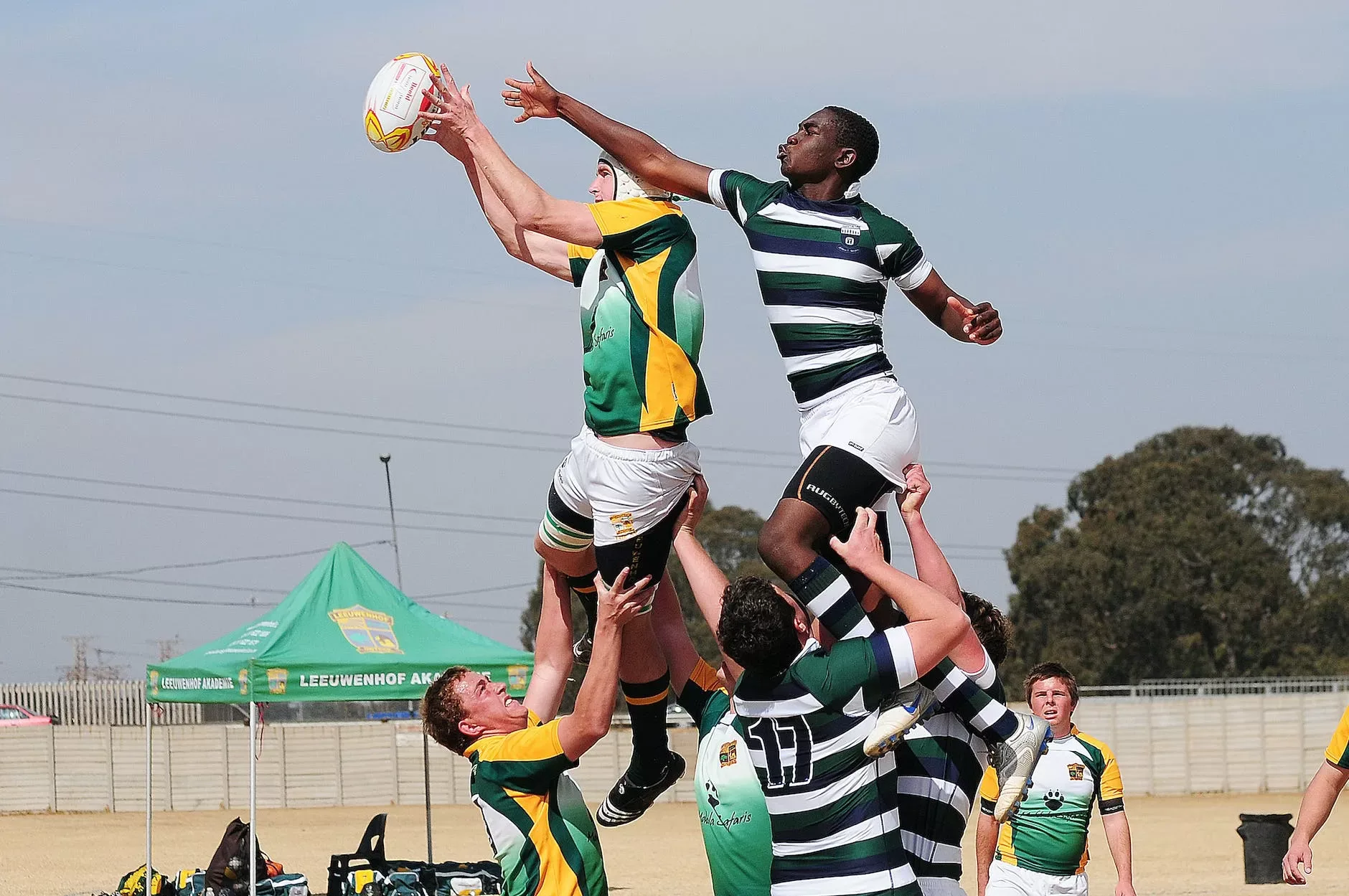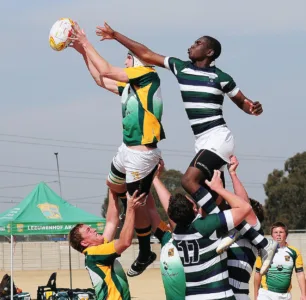Are you ready to take your rugby skills to new heights? Lineout jumping and lifting is an essential aspect of the game, allowing players to secure possession and create attacking opportunities. In this comprehensive guide, we delve into the intricacies of lineout jumping and lifting, exploring the techniques, strategies, and teamwork required to excel in the aerial battle. From jumpers to lifters, coaches to fans, this article is your ultimate resource for mastering the art of lineout jumping and lifting in rugby.
Introduction
When it comes to rugby, the lineout is one of the most iconic and tactical aspects of the game. It presents a unique opportunity for teams to regain possession, launch attacks, and apply pressure on their opponents. At the heart of a successful lineout lies the skillful execution of lineout jumping and lifting.
In this article, we will break down the mechanics, roles, and strategies involved in lineout jumping and lifting, providing you with a comprehensive understanding of how to dominate the aerial battle. Whether you’re a player looking to enhance your skills or a coach seeking to develop a formidable lineout, this guide has got you covered.
The Basics of Lineout Jumping and Lifting
Lineout Structure
Before diving into the specifics of lineout jumping and lifting, let’s first understand the structure of a lineout. A lineout occurs when the ball goes out of bounds and is typically awarded to the team that didn’t touch it last. Both teams form a line perpendicular to the touchline, with a gap between them. The hooker from the team awarded the lineout throws the ball in, aiming to hit his teammates.
The Jumper’s Role
The jumper’s primary objective is to catch the ball thrown into the lineout. Typically, teams assign their tallest and most athletic players as jumpers due to the advantage they have in reaching higher than their opponents. Timing, coordination, and communication are key for jumpers to position themselves optimally and outwit the opposition.
The Lifter’s Role
The lifters are responsible for hoisting the jumper into the air, maximizing their height and reach. A well-executed lift involves synchronized movement, strength, and precision. Lifters must work in unison, communicating effectively to ensure a smooth and powerful lift. They also play a crucial role in protecting the jumper from opposition interference.
Techniques and Strategies
Jumping Techniques
- The Two-Handed Reach: This is the most common technique used by jumpers. As the ball is thrown, the jumper extends their arms upward, using both hands to reach for the ball at the highest point possible. The jumper’s body position is crucial, with the legs providing stability and balance during the jump.
- The One-Handed Reach: Occasionally, a jumper may employ the one-handed reach technique when they need to gain extra height or reach a ball that’s slightly out of their range. This technique requires exceptional hand-eye coordination and balance to maintain control of the ball with one hand.
- The Power Jump: In situations where speed and explosiveness are essential, the power jump technique comes into play. The jumper focuses on generating maximum upward force by using a combination of leg drive and upper body strength. This technique is often used to disrupt the opposition’s lineout or secure a quick ball.
Lifting Techniques
- The Grip: Lifters should position their hands on the jumper’s thighs, fingers pointing toward the inside, and thumbs outside. This grip provides a secure hold and enables lifters to control the trajectory of the jumper effectively.
- The Drive: Lifters initiate the lift by driving upward with their legs, using a combination of strength and coordination. It’s crucial for lifters to maintain a straight back, engaging their core muscles to ensure stability and control.
- The Synchronize: Timing is everything in lifting. Lifters must synchronize their movements to lift the jumper in one fluid motion. Communication between lifters and jumpers is vital, as a well-timed lift can create a significant advantage over the opposition.
Strategic Considerations
- Positioning: A well-planned lineout involves strategic positioning of jumpers and lifters. Coaches analyze the opposition’s lineout patterns and weaknesses to exploit gaps and create opportunities for their team. The positioning of jumpers should be based on their individual strengths, with the aim of maximizing their chances of winning the ball.
- Deception: Teams may employ deceptive tactics to confuse the opposition during lineouts. Dummy jumps, where a player feigns jumping but doesn’t actually contest the ball, can create confusion and open up space for other jumpers or for the team to execute pre-planned moves.
- Defensive Strategies: Defending against a lineout requires coordination and anticipation. Teams can disrupt the opposition’s lineout by employing strategies such as lifting disruptors, where a player disrupts the jumper’s lift by blocking or competing for the ball. Defensive jumpers must be agile, strong, and possess good timing to counter the attacking team effectively.
Teamwork and Communication
Successful lineout jumping and lifting heavily rely on teamwork and effective communication between players. Here are some essential aspects to consider:
- Trust: Jumpers must trust their lifters to execute a clean and powerful lift, while lifters must trust the jumpers to time their jump correctly. Trust is built through practice, repetition, and familiarity with each other’s abilities.
- Communication: Verbal and non-verbal communication is key during lineouts. Lifters must communicate with each other to synchronize their movements and maximize the lift. Jumpers should signal their intentions, providing clear cues to lifters about when they plan to jump or adjust their position.
- Practice: Repetition is crucial to develop the necessary skills and timing required for successful lineouts. Regular training sessions focused on lineout jumping and lifting will help improve technique, coordination, and trust among players.
The Role of Coaches
Coaches play a vital role in developing a strong lineout unit. Here’s how coaches can contribute to the success of lineout jumping and lifting:
- Technical Coaching: Coaches should provide detailed technical guidance on jumping and lifting techniques. They should analyze individual players’ strengths and weaknesses and tailor their coaching accordingly. Video analysis can be a valuable tool to identify areas for improvement and track progress over time.
- Strategic Planning: Coaches must develop effective lineout strategies based on the team’s strengths, the opposition’s weaknesses, and game situations. They should work closely with the team to devise clever moves and set-piece plays that can be executed during lineouts.
- Simulation and Repetition: Coaches should create realistic training scenarios that simulate game-like conditions. Repetition of lineout drills and simulated game situations will enhance players’ decision-making skills, timing, and overall cohesion as a unit.
Conclusion
Lineout jumping and lifting in rugby is an art that requires skill, strength, timing, and effective teamwork. By mastering the techniques, understanding the strategies, and fostering strong communication among players, teams can gain a significant advantage in the aerial battle. Whether you’re a player aspiring to be a proficient jumper, a lifter aiming to lift with precision, or a coach seeking to build a dominant lineout unit, the tips and insights shared in this guide will serve as your roadmap to success. So, take to the skies, embrace the challenge, and become a force to be reckoned with in the world of rugby lineouts!
Lineout jumping and lifting drills
Mastering lineout jumping and lifting requires regular practice and specific drills to develop the necessary skills, coordination, and timing. Here are some effective drills that can help improve your lineout performance:
- Jumping Technique Drill: This drill focuses on refining the jumping technique of the players.
- Set up a lineout with a thrower, a jumper, and lifters.
- Start with the jumper standing a few meters away from the lifters.
- On the thrower’s signal, the jumper runs towards the lifters and times their jump to catch a ball thrown at varying heights.
- Emphasize proper body positioning, hand placement, and timing of the jump.
- Repeat the drill with different jumpers and gradually increase the difficulty by varying the heights and angles of the throws.
- Lifting Synchronization Drill: This drill aims to enhance the coordination and timing between lifters.
- Divide the lifters into pairs and have them stand facing each other.
- Without a jumper initially, the lifters practice their lifting technique and synchronize their movements.
- Start with a simple count or verbal cue to coordinate the lift, gradually increasing the speed and tempo.
- Emphasize maintaining a straight back, engaging the core, and using leg drive to lift effectively.
- Introduce a jumper into the drill and focus on lifters synchronizing their movements to lift the jumper smoothly.
- Lineout Simulation Drill: This drill simulates game-like lineout scenarios to develop decision-making skills and teamwork.
- Set up a full lineout with both teams and include defensive players.
- Create different scenarios, such as a 4-man lineout, 5-man lineout, or attacking versus defending lineouts.
- Coaches can call out specific moves or strategies for the teams to execute during the lineout.
- Focus on communication, timing, and coordination between the thrower, jumper, and lifters.
- Analyze the execution and provide feedback to the players for improvement.
- Defensive Lineout Drill: This drill helps defenders improve their ability to disrupt the opposition’s lineout.
- Set up a lineout with attackers and defenders.
- Assign specific defenders to target the jumper or disrupt the lift.
- Emphasize quick reactions, agility, and timing in competing for the ball or blocking the lift.
- Encourage defenders to communicate and coordinate their efforts to disrupt the opposition’s lineout effectively.
- Conditioning and Endurance Drill: Lineout jumping and lifting require physical strength and endurance. This drill helps build stamina and power.
- Combine lineout drills with fitness exercises such as shuttle runs, sprints, or burpees.
- Integrate quick transitions from the running exercises to lineout setups to simulate the demands of a game.
- Focus on maintaining technique and coordination even when fatigued.
- Gradually increase the intensity and duration of the drill over time.
Remember, repetition and consistency are key to improving lineout jumping and lifting skills. Incorporate these drills into your training sessions regularly, and continue to challenge yourself to develop a strong and cohesive lineout unit.

